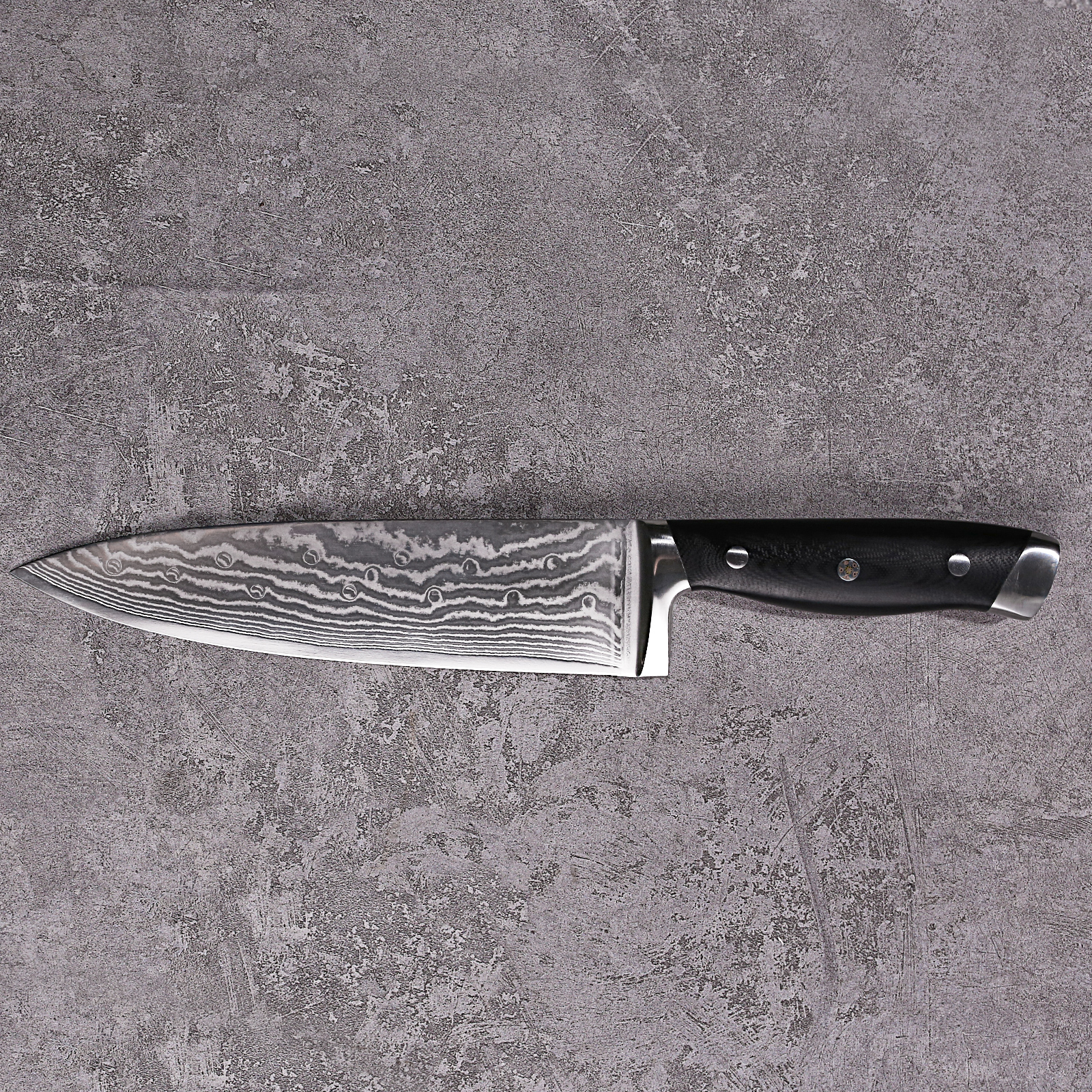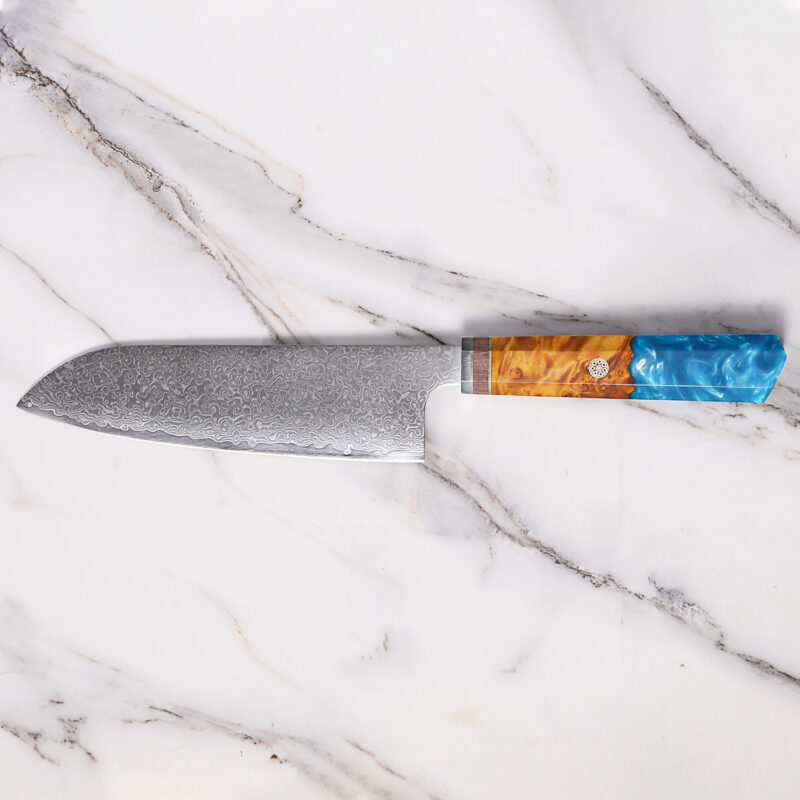Chef's Knives
Japanese and German Knife Differences
When it comes to kitchen cutlery, Japanese and German knives are among the most respected in the world. Each tradition reflects centuries of craftsmanship and a philosophy of cooking unique to its culture. One of the key differences between Japanese and German knives lies in the materials used—particularly the steel for the blade, the handle materials, and the bolster design. These elements affect everything from sharpness and edge retention to durability, comfort, and balance.
Blade Steel: Hard vs. Tough
Japanese Knives: Hard Steel for Razor Sharpness
Japanese knives are renowned for their sharpness and precision. This is largely due to the harder types of steel used in their construction. Common Japanese steels include:
- VG10: A high-carbon stainless steel known for excellent edge retention and corrosion resistance. Rockwell hardness (HRC) is typically around 60–62.
- Aogami (Blue Steel): A premium high-carbon steel with added chromium and tungsten. Known for outstanding sharpness and edge stability, it reaches HRC ratings of 61–64.
The high hardness of these steels allows Japanese knives to be honed to extremely fine angles—often 15 degrees or less. This results in incredibly sharp cutting edges, ideal for precision work. However, harder steels are more brittle and prone to chipping with improper use.
German Knives: Tough Steel for Durability
German knives typically use slightly softer, more impact-resistant steels such as:
- X50CrMoV15: A stainless steel alloy containing chromium, molybdenum, and vanadium. It has a Rockwell hardness around 56–58 HRC.
This softer steel is more ductile, allowing the blade to absorb shock without chipping. German knives are more forgiving and better suited to heavy-duty use like cutting through bone or dense vegetables. They may require more frequent sharpening, but they are easier to maintain.

Handle Materials: Tradition vs. Utility
Japanese Handles: Natural Aesthetics and Lightweight Feel
Japanese knife handles often reflect traditional design and materials. Common handle types include:
- Pakka Wood: A hybrid of hardwood and resin that offers durability and water resistance while preserving the look of wood.
- Wenge Wood: A dense, dark hardwood offering a natural grip and beautiful grain.
- Ho Wood (Magnolia): Traditionally used in wa-style handles—lightweight and comfortable, though less water-resistant.
Japanese handles are typically lighter and have octagonal or D-shaped profiles. The lighter handle shifts the balance toward the blade, offering greater control for delicate slicing.
German Handles: Ergonomics and Strength
German knives often use synthetic, ergonomic handles for long-term use and durability:
- POM (Polyoxymethylene): A high-performance plastic resistant to moisture, temperature, and chemicals.
- PP (Polypropylene): A lightweight, impact-resistant plastic often used in commercial kitchen knives.
These handles are usually full-tang and contoured to fit comfortably in the hand, offering excellent balance and grip during extended use.
Bolster Design: Support vs. Simplicity
German Knives: Full Bolster for Strength and Safety
A distinctive feature of many German knives is the full or sloped steel bolster—a thick junction between the blade and the handle. The bolster serves several purposes:
- Adds weight and balance to the knife.
- Protects fingers during chopping.
- Provides strength and stability at the blade’s base.
Some modern German knives feature a sloped or half bolster, which offers better sharpening access while maintaining structural integrity.
Japanese Knives: Minimal or No Bolster for Precision
Most traditional Japanese knives do not have a bolster. This design reflects their focus on precision and cutting performance. The absence of a bolster allows:
- Full use of the blade length when slicing.
- Easier sharpening along the entire edge.
- A lighter overall feel, enhancing control.
Some modern Japanese knives may include a small, integrated bolster for comfort or style, but it’s usually minimal compared to German designs.
The choice between Japanese and German knives often comes down to your cooking style, skill level, and maintenance preferences:
- Choose Japanese knives if you value razor-sharp edges, traditional aesthetics, and lightweight control for precision tasks.
- Choose German knives for all-around durability, ergonomic comfort, and safer, heavier builds ideal for everyday or professional use.
Both traditions offer exceptional craftsmanship. By understanding the differences in steel hardness, handle materials, and bolster design, you can choose the right tool that enhances your cooking experience.


